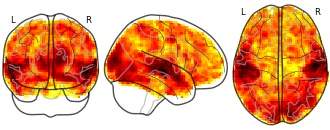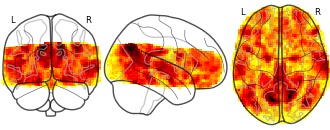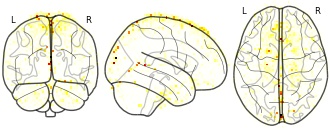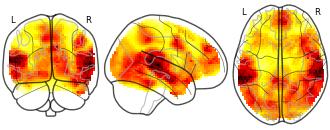- s
studyforrest_phase2
- studyforrest.org
Updated Dec 17, 2020+ more versions Share
Share Facebook
Facebook Twitter
Twitter EmailClick to copy linkLink copied
EmailClick to copy linkLink copied CiteAyan Sengupta; Michael Hanke; Jörg Stadler; Michael Hoffmann; Florian J. Baumgartner; Falko R. Kaule; Vittorio Iacovella; J. Swaroop Guntupalli; Daniel Kottke; Christian Häusler (2020). studyforrest_phase2 [Dataset]. https://www.studyforrest.org/Dataset updatedDec 17, 2020AuthorsAyan Sengupta; Michael Hanke; Jörg Stadler; Michael Hoffmann; Florian J. Baumgartner; Falko R. Kaule; Vittorio Iacovella; J. Swaroop Guntupalli; Daniel Kottke; Christian HäuslerLicense
CiteAyan Sengupta; Michael Hanke; Jörg Stadler; Michael Hoffmann; Florian J. Baumgartner; Falko R. Kaule; Vittorio Iacovella; J. Swaroop Guntupalli; Daniel Kottke; Christian Häusler (2020). studyforrest_phase2 [Dataset]. https://www.studyforrest.org/Dataset updatedDec 17, 2020AuthorsAyan Sengupta; Michael Hanke; Jörg Stadler; Michael Hoffmann; Florian J. Baumgartner; Falko R. Kaule; Vittorio Iacovella; J. Swaroop Guntupalli; Daniel Kottke; Christian HäuslerLicenseODC Public Domain Dedication and Licence (PDDL) v1.0http://www.opendatacommons.org/licenses/pddl/1.0/
License information was derived automaticallyDescriptionExtension of the dataset published in Hanke et al. (2014; doi:10.1038/sdata.2014.3) with additional acquisitions for 15 of the original 20 particpants. These additions include: retinotopic mapping, a localizer paradigm for higher visual areas (FFA, EBA, PPA), and another 2h movie recording with 3T full-brain BOLD fMRI with simultaneous 1000 Hz eyetracking.
- D
StudyForrest
- datalad-catalog.netlify.app
 Share
Share Facebook
Facebook Twitter
Twitter EmailClick to copy linkLink copied
EmailClick to copy linkLink copied CiteAdina Wagner; Michael Hanke; Stephan Heunis, StudyForrest [Dataset]. https://datalad-catalog.netlify.app/AuthorsAdina Wagner; Michael Hanke; Stephan HeunisDataset funded byBMBF, 01GQ1411
CiteAdina Wagner; Michael Hanke; Stephan Heunis, StudyForrest [Dataset]. https://datalad-catalog.netlify.app/AuthorsAdina Wagner; Michael Hanke; Stephan HeunisDataset funded byBMBF, 01GQ1411
NSF, 1429999DescriptionThe StudyForrest project centers around the use of the movie Forrest Gump, which provides complex sensory input that is both reproducible and is also richly laden with real-life-like content and contexts. Since its initial release, the StudyForrest dataset has grown and been extended substantially, and now encompasses many hours of fMRI scans, structural brain scans, eye-tracking data, and extensive annotations of the movie. It is a one-of-a-kind resource for studying high-level cognition in the human brain under complex, natural stimulation. The versatility of the provided data (some individuals have nearly ten hours of fMRI data) enables studies far beyond this main focus. This covers a vast range from studies of low-level signal properties and brain structure, to sensory integration and attentional processes, to computational modeling of representational spaces and brain area interactions.
A studyforrest extension, an annotation of spoken language in the German...
- zenodo.org
application/gzipUpdated Jan 12, 2021 Share
Share Facebook
Facebook Twitter
Twitter EmailClick to copy linkLink copied
EmailClick to copy linkLink copied CiteChristian Olaf Häusler; Christian Olaf Häusler; Michael Hanke; Michael Hanke (2021). A studyforrest extension, an annotation of spoken language in the German dubbed movie ``Forrest Gump'' and its audio-description (annotation) [Dataset]. http://doi.org/10.5281/zenodo.4382143application/gzipAvailable download formatsUnique identifierhttps://doi.org/10.5281/zenodo.4382143Dataset updatedJan 12, 2021AuthorsChristian Olaf Häusler; Christian Olaf Häusler; Michael Hanke; Michael HankeLicense
CiteChristian Olaf Häusler; Christian Olaf Häusler; Michael Hanke; Michael Hanke (2021). A studyforrest extension, an annotation of spoken language in the German dubbed movie ``Forrest Gump'' and its audio-description (annotation) [Dataset]. http://doi.org/10.5281/zenodo.4382143application/gzipAvailable download formatsUnique identifierhttps://doi.org/10.5281/zenodo.4382143Dataset updatedJan 12, 2021AuthorsChristian Olaf Häusler; Christian Olaf Häusler; Michael Hanke; Michael HankeLicenseAttribution 4.0 (CC BY 4.0)https://creativecommons.org/licenses/by/4.0/
License information was derived automaticallyDescriptionThis dataset contains the annotation of speech spoken in the research cut (Hanke et al. 2014; Hanke et al., 2016) of the movie "Forrest Gump" (Zemeckis, 1994) and its audio-description that was broadcast as an additional audio track (Koop et al., 2009) for visually impaired listeners on Swiss public television. The corresponding paper is hosted on github (https://github.com/psychoinformatics-de/studyforrest-paper-speechannotation) and published in f1000research (https://doi.org/10.12688/f1000research.27621.1).
- N
A studyforrest extension, simultaneous fMRI and eye gaze recordings during...
- neurovault.org
niftiUpdated Jun 30, 2018+ more versions Share
Share Facebook
Facebook Twitter
Twitter EmailClick to copy linkLink copied
EmailClick to copy linkLink copied Cite(2018). A studyforrest extension, simultaneous fMRI and eye gaze recordings during prolonged natural stimulation: Emotions portrayed via auditory cues (verbal, non-speech audio) in a natural movie [Dataset]. http://identifiers.org/neurovault.image:14273niftiAvailable download formatsUnique identifierhttps://identifiers.org/neurovault.image:14273Dataset updatedJun 30, 2018License
Cite(2018). A studyforrest extension, simultaneous fMRI and eye gaze recordings during prolonged natural stimulation: Emotions portrayed via auditory cues (verbal, non-speech audio) in a natural movie [Dataset]. http://identifiers.org/neurovault.image:14273niftiAvailable download formatsUnique identifierhttps://identifiers.org/neurovault.image:14273Dataset updatedJun 30, 2018LicenseCC0 1.0 Universal Public Domain Dedicationhttps://creativecommons.org/publicdomain/zero/1.0/
License information was derived automaticallyDescriptionCollection description
Subject species
homo sapiens
Modality
fMRI-BOLD
Cognitive paradigm (task)
film viewing
Map type
Z
studyforrest_movie_denoised
- openneuro.org
Updated Jul 15, 2019 Share
Share Facebook
Facebook Twitter
Twitter EmailClick to copy linkLink copied
EmailClick to copy linkLink copied CiteXingyu Liu; Zonglei Zhen; Anmin Yang; Haohao Bai; Jia Liu (2019). studyforrest_movie_denoised [Dataset]. http://doi.org/10.18112/openneuro.ds001769.v1.2.1Unique identifierhttps://doi.org/10.18112/openneuro.ds001769.v1.2.1Dataset updatedJul 15, 2019AuthorsXingyu Liu; Zonglei Zhen; Anmin Yang; Haohao Bai; Jia LiuLicense
CiteXingyu Liu; Zonglei Zhen; Anmin Yang; Haohao Bai; Jia Liu (2019). studyforrest_movie_denoised [Dataset]. http://doi.org/10.18112/openneuro.ds001769.v1.2.1Unique identifierhttps://doi.org/10.18112/openneuro.ds001769.v1.2.1Dataset updatedJul 15, 2019AuthorsXingyu Liu; Zonglei Zhen; Anmin Yang; Haohao Bai; Jia LiuLicenseCC0 1.0 Universal Public Domain Dedicationhttps://creativecommons.org/publicdomain/zero/1.0/
License information was derived automaticallyDescriptionA denoised audio-visual movie watching fMRI data in studyforrest dataset
Note: This dataset is compatible with the BIDS v1.3.0-dev as a standalone derivative dataset. Due to that the OpenNeuro.org does not support the BIDs v1.3.0 yet (_desc-
Source data
We here provide a denoised version of the 3T movie-watching fMRI raw data in the studyforrest project (https://openneuro.org/datasets/ds000113). The raw data was originally hosted on OpenfMRI.org as ds000113d. However, ds000113d on OpenfMRI.org has been combined along with other related datasets and now is simply referred to as ds000113 on OpenNeuro.org. For more information about the studyforrest project visit: http://studyforrest.org.
Pipeline description
A four-step denoising procedure were applied on the movie-watching fMRI data in the studyforrest dataset, producing a denoised version of that.
1. Preprocessing: motion correction, slice timing correction, brain extraction, high-pass temporal filtering (200s cutoff) and OPTIONAL spatial smoothing (Gaussian kernel; FWHM = 5 mm) with FEAT in FSL v6.00
2. ICA decomposition: with FSL’s MELODIC v3.15
3. IC manual classification
4. Artefacts removal: with fsl_regfilt in FSL’s MELODIC v3.15
Source code can be found at https://github.com/xingyu-liu/studyforrest_denoise.Dataset content overview
After the four-step denoising procedure, 4 kinds of data were produced for each run of each participant.
1. the denoised fMRI data
./sub-xx/ses-movie/func/sub-xx_ses-movie_task-movie-run-x_desc-denoisedSm5/denoisedUnsm_bold.nii.gz
2. spatial maps of decomposed ICs
./sub-xx/ses-movie/func/sub-xx_ses-movie_task-movie-run-x_desc-MELODICSm5/MELODICUnsm_components.nii.gz
3. timeseries of decomposed ICs
./sub-xx/ses-movie/func/sub-xx_ses-movie_task-movie-run-x_desc-MELODICSm5/MELODICUnsm_mixing.tsv
4. Labels of decomposed ICs
./sub-xx/ses-movie/func/sub-xx_ses-movie_task-movie-run-x_desc-MELODICSm5/MELODICUnsm_componentLabels.txtData from: A studyforrest extension, an annotation of spoken language in the...
- zenodo.org
application/gzipUpdated Jan 12, 2021 Share
Share Facebook
Facebook Twitter
Twitter EmailClick to copy linkLink copied
EmailClick to copy linkLink copied CiteChristian Olaf Häusler; Christian Olaf Häusler; Michael Hanke; Michael Hanke (2021). A studyforrest extension, an annotation of spoken language in the German dubbed movie ``Forrest Gump'' and its audio-description (validation analysis) [Dataset]. http://doi.org/10.5281/zenodo.4382188application/gzipAvailable download formatsUnique identifierhttps://doi.org/10.5281/zenodo.4382188Dataset updatedJan 12, 2021AuthorsChristian Olaf Häusler; Christian Olaf Häusler; Michael Hanke; Michael HankeLicense
CiteChristian Olaf Häusler; Christian Olaf Häusler; Michael Hanke; Michael Hanke (2021). A studyforrest extension, an annotation of spoken language in the German dubbed movie ``Forrest Gump'' and its audio-description (validation analysis) [Dataset]. http://doi.org/10.5281/zenodo.4382188application/gzipAvailable download formatsUnique identifierhttps://doi.org/10.5281/zenodo.4382188Dataset updatedJan 12, 2021AuthorsChristian Olaf Häusler; Christian Olaf Häusler; Michael Hanke; Michael HankeLicenseAttribution 4.0 (CC BY 4.0)https://creativecommons.org/licenses/by/4.0/
License information was derived automaticallyDescriptionThis component contains the data of the analysis that we ran as a validation of the annotation of speech spoken in the research cut (Hanke et al., 2016) of the movie "Forrest Gump" (Zemeckis, 1994) and its audio-description. The corresponding paper is hosted on github (https://github.com/psychoinformatics-de/studyforrest-paper-speechannotation) and published in f1000research (https://doi.org/10.12688/f1000research.27621.1).
- N
High-resolution 7-Tesla fMRI data on the perception of musical genres – an...
- neurovault.org
niftiUpdated Jun 30, 2018+ more versions Share
Share Facebook
Facebook Twitter
Twitter EmailClick to copy linkLink copied
EmailClick to copy linkLink copied Cite(2018). High-resolution 7-Tesla fMRI data on the perception of musical genres – an extension to the studyforrest dataset: Genre: ambient > others [Dataset]. http://identifiers.org/neurovault.image:1757niftiAvailable download formatsUnique identifierhttps://identifiers.org/neurovault.image:1757Dataset updatedJun 30, 2018License
Cite(2018). High-resolution 7-Tesla fMRI data on the perception of musical genres – an extension to the studyforrest dataset: Genre: ambient > others [Dataset]. http://identifiers.org/neurovault.image:1757niftiAvailable download formatsUnique identifierhttps://identifiers.org/neurovault.image:1757Dataset updatedJun 30, 2018LicenseCC0 1.0 Universal Public Domain Dedicationhttps://creativecommons.org/publicdomain/zero/1.0/
License information was derived automaticallyDescriptionResponse to ambient music exceeds the mean of the responses to other musical genres.
Collection description
The twenty participants were repeatedly stimulated with a total of 25 music clips, with and without speech content, from five different genres using a slow event-related paradigm. The data release includes raw fMRI data, as well as precomputed structural alignments for within-subject and group analysis. In addition to fMRI, simultaneously recorded cardiac and respiratory traces, as well the complete implementation of the stimulation paradigm, including stimuli, are provided. An initial quality control analysis reveals distinguishable patterns of response to individual genres throughout a large expanse of areas known to be involved in auditory and speech processing.
Subject species
homo sapiens
Modality
fMRI-BOLD
Cognitive paradigm (task)
auditory scene perception
Map type
Z
- N
High-resolution 7-Tesla fMRI data on the perception of musical genres – an...
- neurovault.org
niftiUpdated Jun 30, 2018+ more versions Share
Share Facebook
Facebook Twitter
Twitter EmailClick to copy linkLink copied
EmailClick to copy linkLink copied Cite(2018). High-resolution 7-Tesla fMRI data on the perception of musical genres – an extension to the studyforrest dataset: Genre: metal > others [Dataset]. http://identifiers.org/neurovault.image:1754niftiAvailable download formatsUnique identifierhttps://identifiers.org/neurovault.image:1754Dataset updatedJun 30, 2018License
Cite(2018). High-resolution 7-Tesla fMRI data on the perception of musical genres – an extension to the studyforrest dataset: Genre: metal > others [Dataset]. http://identifiers.org/neurovault.image:1754niftiAvailable download formatsUnique identifierhttps://identifiers.org/neurovault.image:1754Dataset updatedJun 30, 2018LicenseCC0 1.0 Universal Public Domain Dedicationhttps://creativecommons.org/publicdomain/zero/1.0/
License information was derived automaticallyDescriptionResponse to heavy metal exceeds the mean of the responses to other musical genres.
Collection description
The twenty participants were repeatedly stimulated with a total of 25 music clips, with and without speech content, from five different genres using a slow event-related paradigm. The data release includes raw fMRI data, as well as precomputed structural alignments for within-subject and group analysis. In addition to fMRI, simultaneously recorded cardiac and respiratory traces, as well the complete implementation of the stimulation paradigm, including stimuli, are provided. An initial quality control analysis reveals distinguishable patterns of response to individual genres throughout a large expanse of areas known to be involved in auditory and speech processing.
Subject species
homo sapiens
Modality
fMRI-BOLD
Cognitive paradigm (task)
auditory scene perception
Map type
Z
Metadata record for: A manually denoised audio-visual movie watching fMRI...
- springernature.figshare.com
txtUpdated Jun 3, 2023 Share
Share Facebook
Facebook Twitter
Twitter EmailClick to copy linkLink copied
EmailClick to copy linkLink copied CiteMetadata Creator (2023). Metadata record for: A manually denoised audio-visual movie watching fMRI dataset for the studyforrest project [Dataset]. http://doi.org/10.6084/m9.figshare.10266554.v2txtAvailable download formatsUnique identifierhttps://doi.org/10.6084/m9.figshare.10266554.v2Dataset updatedJun 3, 2023AuthorsMetadata CreatorLicense
CiteMetadata Creator (2023). Metadata record for: A manually denoised audio-visual movie watching fMRI dataset for the studyforrest project [Dataset]. http://doi.org/10.6084/m9.figshare.10266554.v2txtAvailable download formatsUnique identifierhttps://doi.org/10.6084/m9.figshare.10266554.v2Dataset updatedJun 3, 2023AuthorsMetadata CreatorLicenseCC0 1.0 Universal Public Domain Dedicationhttps://creativecommons.org/publicdomain/zero/1.0/
License information was derived automaticallyDescriptionThis dataset contains key characteristics about the data described in the Data Descriptor A manually denoised audio-visual movie watching fMRI dataset for the studyforrest project. Contents:
1. human readable metadata summary table in CSV format 2. machine readable metadata file in JSON format Versioning Note:Version 2 was generated when the metadata format was updated from JSON to JSON-LD. This was an automatic process that changed only the format, not the contents, of the metadata.- s
studyforrest_multires3t
- studyforrest.org
Updated Dec 17, 2020 Share
Share Facebook
Facebook Twitter
Twitter EmailClick to copy linkLink copied
EmailClick to copy linkLink copied CiteAyan Sengupta; Renat Yakupov; Oliver Speck; Stefan Pollmann; Michael Hanke; Martin Kanowski; Claus Tempelmann (2020). studyforrest_multires3t [Dataset]. https://www.studyforrest.org/Dataset updatedDec 17, 2020AuthorsAyan Sengupta; Renat Yakupov; Oliver Speck; Stefan Pollmann; Michael Hanke; Martin Kanowski; Claus TempelmannLicense
CiteAyan Sengupta; Renat Yakupov; Oliver Speck; Stefan Pollmann; Michael Hanke; Martin Kanowski; Claus Tempelmann (2020). studyforrest_multires3t [Dataset]. https://www.studyforrest.org/Dataset updatedDec 17, 2020AuthorsAyan Sengupta; Renat Yakupov; Oliver Speck; Stefan Pollmann; Michael Hanke; Martin Kanowski; Claus TempelmannLicenseODC Public Domain Dedication and Licence (PDDL) v1.0http://www.opendatacommons.org/licenses/pddl/1.0/
License information was derived automaticallyDescriptionExtension of a matching fMRI dataset (Sengupta, et al., 2017; OpenFMRI ds000113c) on participants performing a central fixation task while being stimulated with oriented visual gratings. This dataset extends the previous one with acquisitions for 3 matching spatial resolutions (1.4, 2.0, and 3.0 mm) at 3T (complementing the previous 7T acquisitions at 0.8, 1.4, 2.0, and 3.0 mm). Five of the total of seven participants are identical in both datasets. All participants are part of the studyforrest.org project.
- g
Processing of visual and non-visual naturalistic spatial information in the...
- doi.gin.g-node.org
Updated Dec 15, 2021 Share
Share Facebook
Facebook Twitter
Twitter EmailClick to copy linkLink copied
EmailClick to copy linkLink copied CiteChristian O. Häusler; Simon B. Eickhoff; Michael Hanke (2021). Processing of visual and non-visual naturalistic spatial information in the "parahippocampal place area": from raw data to results [Dataset]. http://doi.org/10.12751/g-node.7is9s6Unique identifierhttps://doi.org/10.12751/g-node.7is9s6Dataset updatedDec 15, 2021Dataset provided byPsychoinformatics Lab, Institute of Neuroscience and Medicine, Brain & Behaviour (INM-7), Research Centre Jülich, Jülich, Germany; Institute of Systems Neuroscience, Medical Faculty, Heinrich Heine University, Düsseldorf, GermanyAuthorsChristian O. Häusler; Simon B. Eickhoff; Michael HankeLicense
CiteChristian O. Häusler; Simon B. Eickhoff; Michael Hanke (2021). Processing of visual and non-visual naturalistic spatial information in the "parahippocampal place area": from raw data to results [Dataset]. http://doi.org/10.12751/g-node.7is9s6Unique identifierhttps://doi.org/10.12751/g-node.7is9s6Dataset updatedDec 15, 2021Dataset provided byPsychoinformatics Lab, Institute of Neuroscience and Medicine, Brain & Behaviour (INM-7), Research Centre Jülich, Jülich, Germany; Institute of Systems Neuroscience, Medical Faculty, Heinrich Heine University, Düsseldorf, GermanyAuthorsChristian O. Häusler; Simon B. Eickhoff; Michael HankeLicenseAttribution 4.0 (CC BY 4.0)https://creativecommons.org/licenses/by/4.0/
License information was derived automaticallyDataset funded byBMBF
NSFDescriptionThis repository contains the fMRI data, annotations, analysis scripts to generate the results, and results in Häusler C.O. & Hanke M. (submitted) as Datalad datasets (https://github.com/datalad).
- N
Is The PPA a Visual Area? BOLD responses to incidental spatial cues in...
- neurovault.org
niftiUpdated Sep 12, 2019+ more versions Share
Share Facebook
Facebook Twitter
Twitter EmailClick to copy linkLink copied
EmailClick to copy linkLink copied Cite(2019). Is The PPA a Visual Area? BOLD responses to incidental spatial cues in naturalistic stimulation: geo, rgeo, se_new, se_old > non_geo [Dataset]. http://identifiers.org/neurovault.image:129108niftiAvailable download formatsUnique identifierhttps://identifiers.org/neurovault.image:129108Dataset updatedSep 12, 2019License
Cite(2019). Is The PPA a Visual Area? BOLD responses to incidental spatial cues in naturalistic stimulation: geo, rgeo, se_new, se_old > non_geo [Dataset]. http://identifiers.org/neurovault.image:129108niftiAvailable download formatsUnique identifierhttps://identifiers.org/neurovault.image:129108Dataset updatedSep 12, 2019LicenseCC0 1.0 Universal Public Domain Dedicationhttps://creativecommons.org/publicdomain/zero/1.0/
License information was derived automaticallyDescriptiongeography, room geography, new setting, old setting > body, bodypart, face & head, object, female person, male person
Collection description
This collection comprises unthresholded z-maps of seven contrasts aiming to isolate the "Parahippocampal Place Area" by reusing the audio-only version of the movie "Forrest Gump" as part of the studyforrest-dataset (studyforrest.org; Hanke et. al, 2014, A high-resolution 7-Tesla fMRI dataset from complex natural stimulation with an audio movie). For further information feel free to send an email to der.haeusler@gmx.net
Subject species
homo sapiens
Modality
fMRI-BOLD
Analysis level
group
Cognitive paradigm (task)
audio narrative
Map type
Z
- N
Is The PPA a Visual Area? BOLD responses to incidental spatial cues in...
- neurovault.org
niftiUpdated Sep 12, 2019+ more versions Share
Share Facebook
Facebook Twitter
Twitter EmailClick to copy linkLink copied
EmailClick to copy linkLink copied Cite(2019). Is The PPA a Visual Area? BOLD responses to incidental spatial cues in naturalistic stimulation: se_new > se_old [Dataset]. http://identifiers.org/neurovault.image:129114niftiAvailable download formatsUnique identifierhttps://identifiers.org/neurovault.image:129114Dataset updatedSep 12, 2019License
Cite(2019). Is The PPA a Visual Area? BOLD responses to incidental spatial cues in naturalistic stimulation: se_new > se_old [Dataset]. http://identifiers.org/neurovault.image:129114niftiAvailable download formatsUnique identifierhttps://identifiers.org/neurovault.image:129114Dataset updatedSep 12, 2019LicenseCC0 1.0 Universal Public Domain Dedicationhttps://creativecommons.org/publicdomain/zero/1.0/
License information was derived automaticallyDescriptionFSL5.0
Collection description
This collection comprises unthresholded z-maps of seven contrasts aiming to isolate the "Parahippocampal Place Area" by reusing the audio-only version of the movie "Forrest Gump" as part of the studyforrest-dataset (studyforrest.org; Hanke et. al, 2014, A high-resolution 7-Tesla fMRI dataset from complex natural stimulation with an audio movie). For further information feel free to send an email to der.haeusler@gmx.net
Subject species
homo sapiens
Modality
fMRI-BOLD
Analysis level
group
Cognitive paradigm (task)
audio narrative
Map type
Z
- N
forrest_faces - wJJYp: anyFaces_stat-variance
- neurovault.org
niftiUpdated Feb 23, 2020+ more versions Share
Share Facebook
Facebook Twitter
Twitter EmailClick to copy linkLink copied
EmailClick to copy linkLink copied Cite(2020). forrest_faces - wJJYp: anyFaces_stat-variance [Dataset]. http://identifiers.org/neurovault.image:370961niftiAvailable download formatsUnique identifierhttps://identifiers.org/neurovault.image:370961Dataset updatedFeb 23, 2020License
Cite(2020). forrest_faces - wJJYp: anyFaces_stat-variance [Dataset]. http://identifiers.org/neurovault.image:370961niftiAvailable download formatsUnique identifierhttps://identifiers.org/neurovault.image:370961Dataset updatedFeb 23, 2020LicenseCC0 1.0 Universal Public Domain Dedicationhttps://creativecommons.org/publicdomain/zero/1.0/
License information was derived automaticallyDescriptionCollection description
Faces and face related variables in studyForrest + music
Subject species
homo sapiens
Modality
fMRI-BOLD
Analysis level
group
Cognitive paradigm (task)
None / Other
Map type
V
- N
Specialized functions of default mode subnetworks and multiple-demand...
- neurovault.org
niftiUpdated Dec 4, 2024+ more versions Share
Share Facebook
Facebook Twitter
Twitter EmailClick to copy linkLink copied
EmailClick to copy linkLink copied Cite(2024). Specialized functions of default mode subnetworks and multiple-demand regions in monitoring naturalistic transitions: Activation for pure character transitions [Dataset]. http://identifiers.org/neurovault.image:894878niftiAvailable download formatsUnique identifierhttps://identifiers.org/neurovault.image:894878Dataset updatedDec 4, 2024License
Cite(2024). Specialized functions of default mode subnetworks and multiple-demand regions in monitoring naturalistic transitions: Activation for pure character transitions [Dataset]. http://identifiers.org/neurovault.image:894878niftiAvailable download formatsUnique identifierhttps://identifiers.org/neurovault.image:894878Dataset updatedDec 4, 2024LicenseCC0 1.0 Universal Public Domain Dedicationhttps://creativecommons.org/publicdomain/zero/1.0/
License information was derived automaticallyDescriptionActivation for character transitions occurring independently, without another transition within 2 seconds
Collection description
Whole-brain activation maps for different type of transitions in naturalistic stimuli (using Studyforrest database)
Subject species
homo sapiens
Modality
fMRI-BOLD
Analysis level
group
Cognitive paradigm (task)
movie watching task
Map type
T
Not seeing a result you expected?
Learn how you can add new datasets to our index.
 Facebook
Facebook Twitter
TwitterODC Public Domain Dedication and Licence (PDDL) v1.0http://www.opendatacommons.org/licenses/pddl/1.0/
License information was derived automatically
Extension of the dataset published in Hanke et al. (2014; doi:10.1038/sdata.2014.3) with additional acquisitions for 15 of the original 20 particpants. These additions include: retinotopic mapping, a localizer paradigm for higher visual areas (FFA, EBA, PPA), and another 2h movie recording with 3T full-brain BOLD fMRI with simultaneous 1000 Hz eyetracking.






